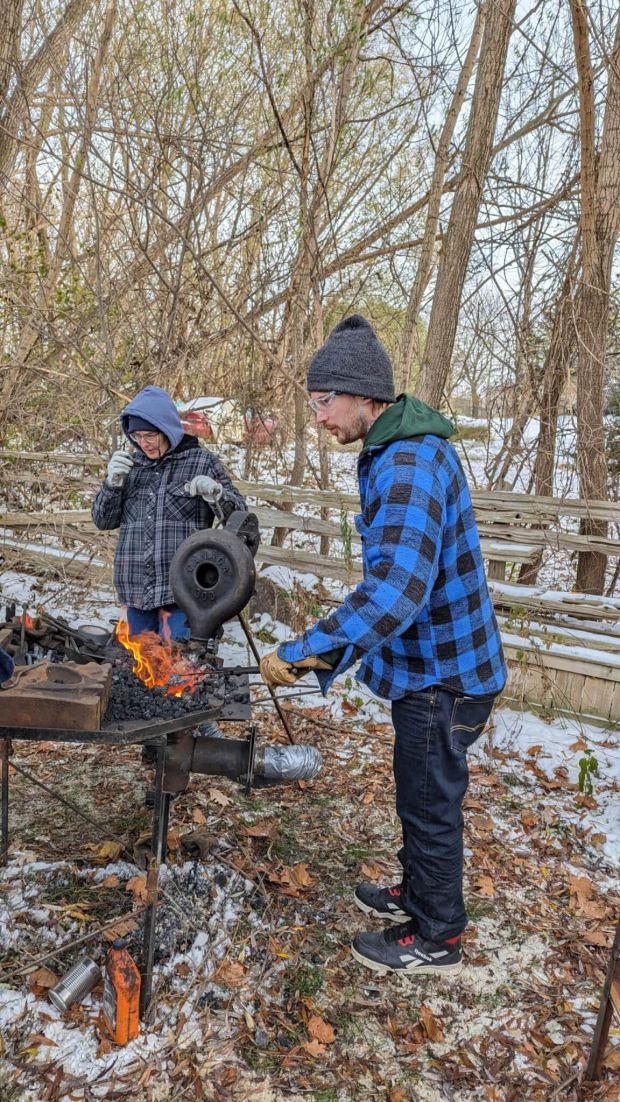Antenna science goes to pot
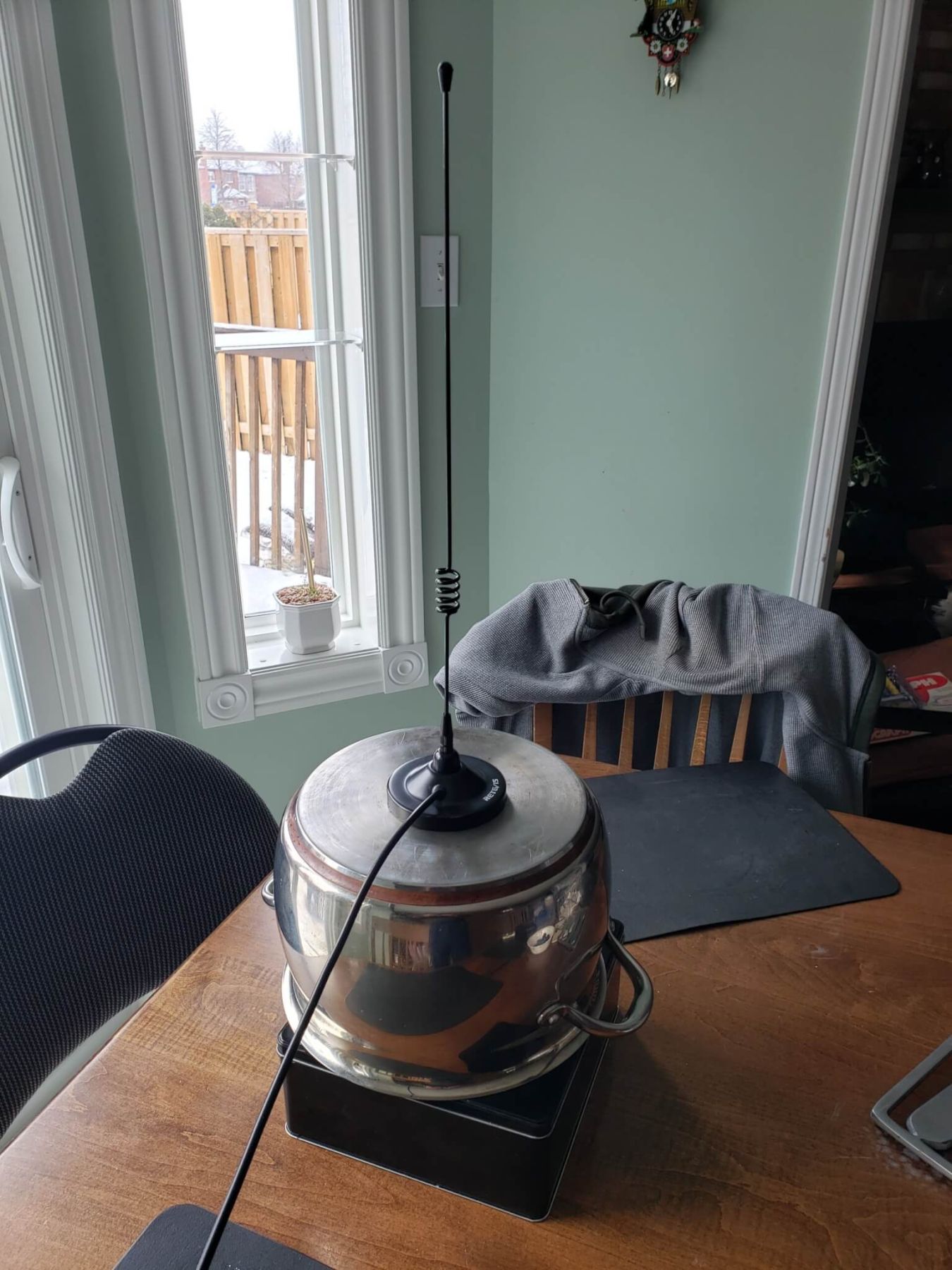
Half-baked or well done?
If you know anything about radio and antennas – and if you don’t, check out our beginner radio and antenna pages – you know that the most basic antenna is a dipole, and a dipole antenna has two sides. All antennas require two sides.
A magnetic mount antenna (magmount) looks like it has only one side. That’s because the other side is the car. Really.
So if you want to use it as an antenna in your house or somewhere else… or if you don’t own a car… or you don’t want to drive your car into the second floor of your house to get that height advantage (it’s been done), what do you do?
The answer from most hams is to put it on a cookie sheet. Not an aluminum cookie sheet, because the magnet (that’s the mag- part of mag-mount) won’t stick to it. That metal you attach the magmount to is known as a counterpoise.
So we thought… is the cookie sheet ideal? What if we got something with a heck of a lot more metal? Better magnetic properties? Science – and idle time under COVID lockdown – demands an answer.
To test, we are using a nanovna – that’s nano for it’s tiny size, and VNA for Vector Network Analyser. Sound expensive? For $50-$60 and it’s an incredible deal. Comparable units used to cost thousands of dollars.
We use the nanovna to measure the SWR – Standing Wave Ratio, the preferred measure of antenna efficiency. SWR of 1 is perfect – all the energy is going out as radio waves. Anything below 2 is generally acceptable when dealing with higher-power HF radios. Above 2, and you need an antenna tuner to compensate.
But first a few caveats:
- There are a lot of cautions with nanovna, like the need to calibrate within the frequency range for the test. We’re not providing the details here because the nanovna documentation, beginner guides and forums are phenomenal. The cookie sheet vs other pots counterpoise assessments, on the other hand, are sorely lacking.
- Our measurements are not lab-grade. Every stupid little thing can affect the SWR measurement. Wiggle the antenna wire and it changes. Stand next to it and it changes. Eat a cookie and it changes (we use our cookie sheets for their original design purpose). Formal testing involves setting stuff up in a field outside, fixing the wires, complex instrumentation and more. We didn’t do that.
- Ground (as in dirt you are standing on) can be an effective counterpoise, or part of the counterpoise. Moving your cookie sheet from a table top to the ground can make a difference.
- Our measurements are consistent relative to each other. We had some significant variance for the tests for many of the items tested. But from item to item, the variances were pretty consistent.
Baseline: no counterpoise
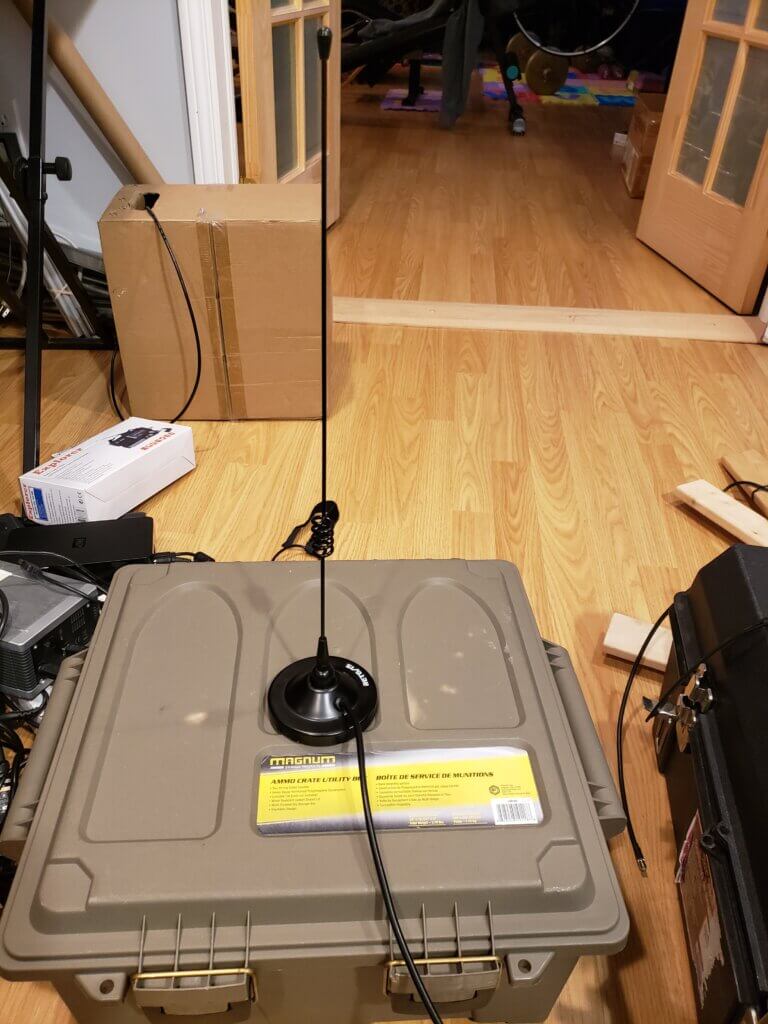
We started with the antenna on a table (SWR: around 8) , and then for consistency with other measurements, on a plastic case on the basement floor (SWR: around 6). Either way it sucks, but it seems that proximity to actual ground makes a difference.
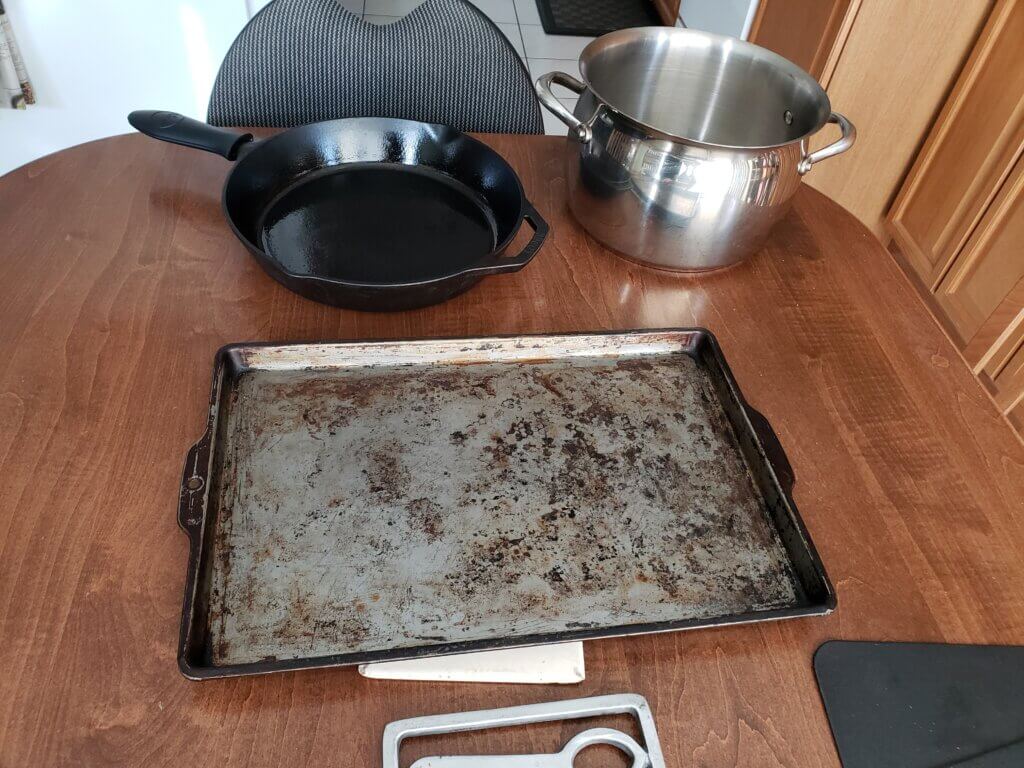
Our choice of weaponry:
- The classic cookie sheet
- A cast iron frying pan
- A large pot rated for induction cookers
The classic solution: a cookie sheet
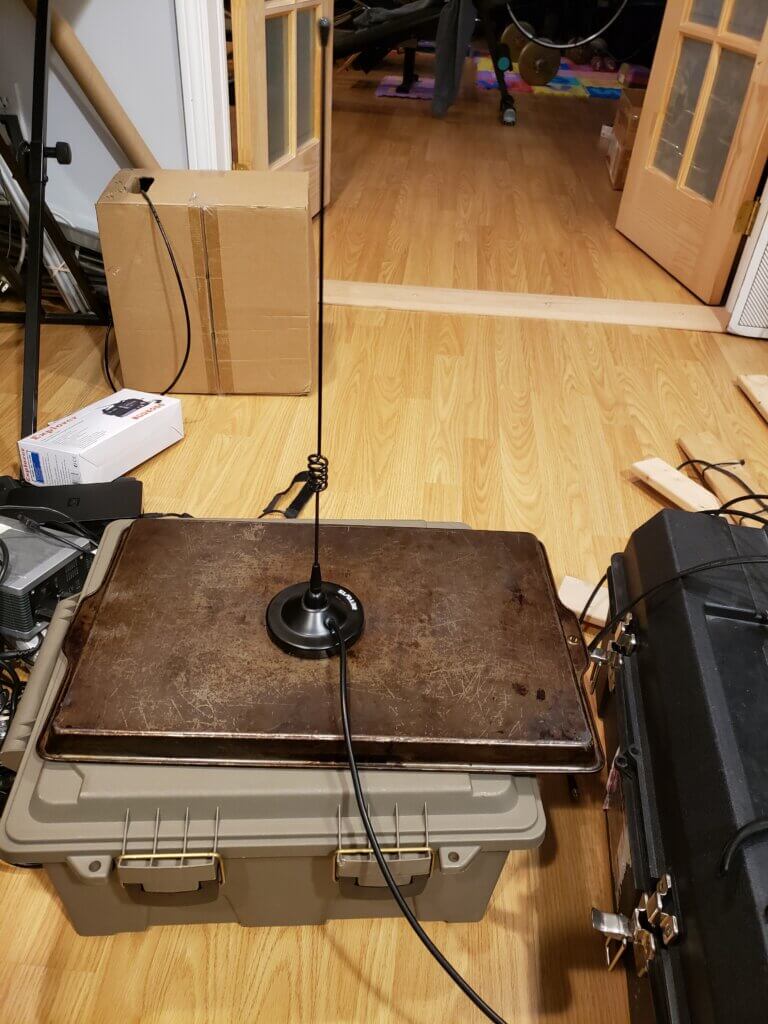
The nanovna is tiny device – 15mm thick, but otherwise not much bigger than a credit card. There are bigger versions and people will tell you to spend more $ for them because they’re easier to read. But even then, capturing the screen would be a challenge. Why bother with the larger unit when there’s free software to display the data live on a PC?
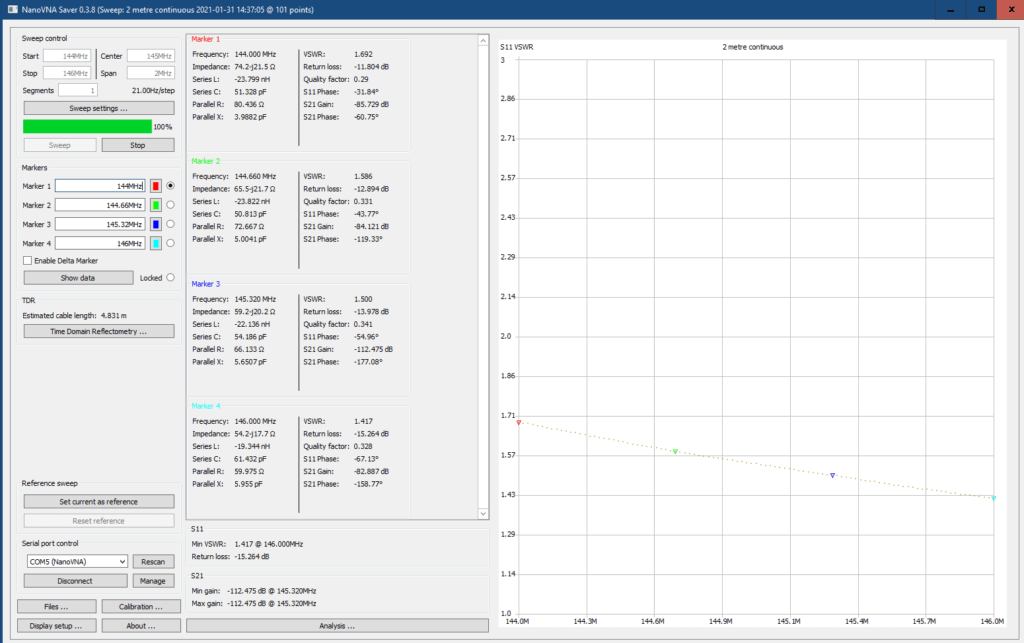
SWR, because it’s related to impedance, varies with the frequency. For our tests did a rough scan of the VHF frequency range, from 144 MHz to 146 MHz. The graph shows the SWR ranging from about 1.7 at 144 MHz down to 1.43 at 146 MHz. The exact number for 4 data points are in the table immediately to the left of the graph. 1.43 to 1.7 – all well below the acceptable value of 2, and much better than the 6 to 8 of the antenna alone.
Heavy metal: 12″ cast iron frying pan.
This is one heavy sumofasumthin. You don’t lift it with one hand. And if you’re a cast-iron cooking fan – yes, it’s been properly seasoned.
We don’t have a picture of it with the antenna on it because we forgot to take the picture before we took the antenna off and there was no way we were going to put it back on. The magnet loves the cast iron. It doesn’t want to let go. We can’t even slide it on the pan surface. It took an assistant, profanity and prying with a screwdriver to get it off.
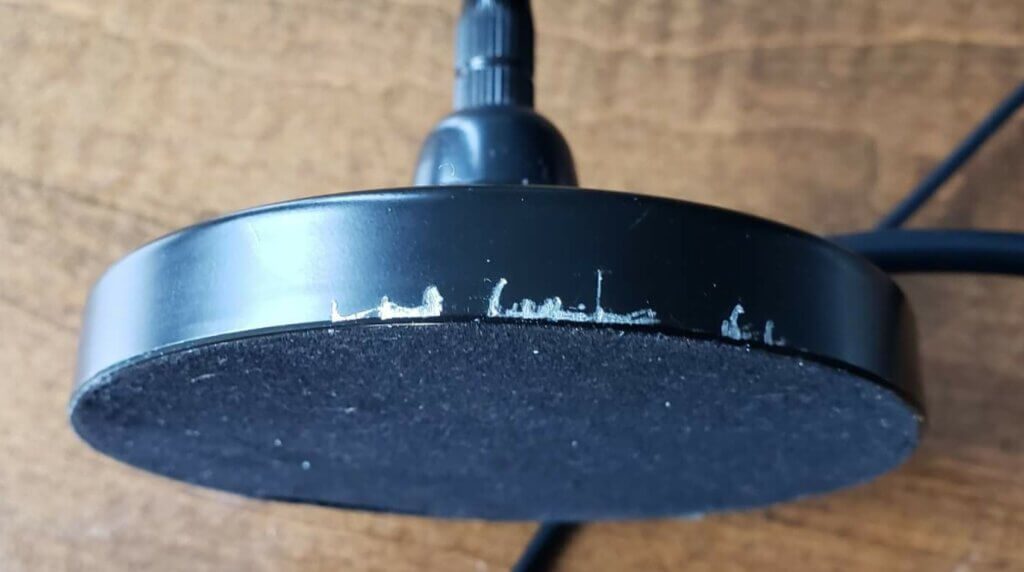
You can see the lovely scratches from the poking and prying.
As for the results… 1.734@144 MHz and 1.375@146 MHz. All in the same range as the cookie sheet.
Big induction pot (dutch oven)
This is a heavy pot – Costco’s own Kirkland brand. It’s not as heavy as the cast iron, but definitely heavier than any other pot we’ve seen of this size. It’s rated for induction cookers, so it’s got metal that responds well to magnets. The magnet definitely likes it, but not as much as the cast iron. We could slide it and get it off without drama.
The readings: 1.590@144MHz to 1.283@146 MHz.
Impressive. Less metal and less magnetic adherence than the cast iron, and less surface are than the cookie sheet, but better than both.
Combos
What the heck, we’ve got all the pots here… let’s try some stacking.
Cast iron and cookie sheet gave us 1.43@144MHz to our lowest-of-the-day 1.18@146 MHz.
The most surprising result was the induction pot on the cookie sheet. It’s worth showing the graph for that one.
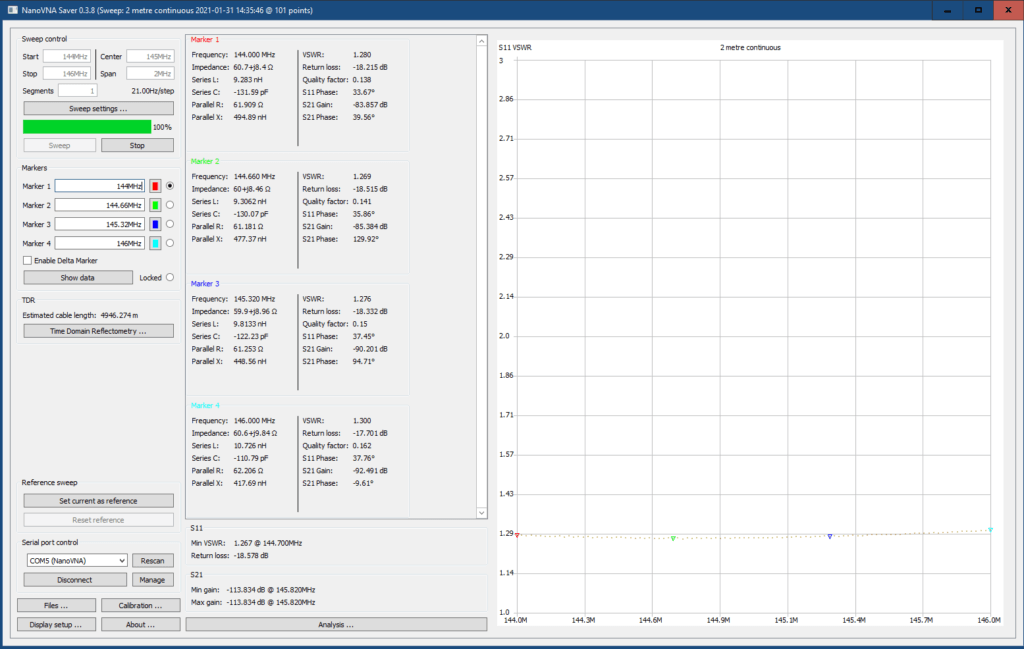
Nice, flat 1.28@144MHz (lowest of the day) to 1.30@146 MHz.
Analysis and hypotheses
Mass of metal doesn’t seem to be a factor, since the cast iron pan didn’t do much better than the baking sheet. Our dutch oven did best, and it has a clear height advantage over the other two, and the height was further increased with the cookie sheet underneath. Small length differences make a difference for any antenna type.
So we need a few more tests to better differentiate between height, weight (quantity of metal) and magnetic attraction.
Next tests
We brought in a couple more items. We’ll only report the relative numbers, since the test conditions were different – i.e. we need some daylight once in a while and crawled back upstairs. (It’s OK. It’s my basement, not my mom’s).
Our additional test candidates:
- A cookie tin that, on it’s side, is about the height of the dutch oven
- A really tall aluminum turkey deep frying pot
The aluminum pot was useless. Magnet doesn’t stick to it, and high SWR. So the magnetic link is critical.
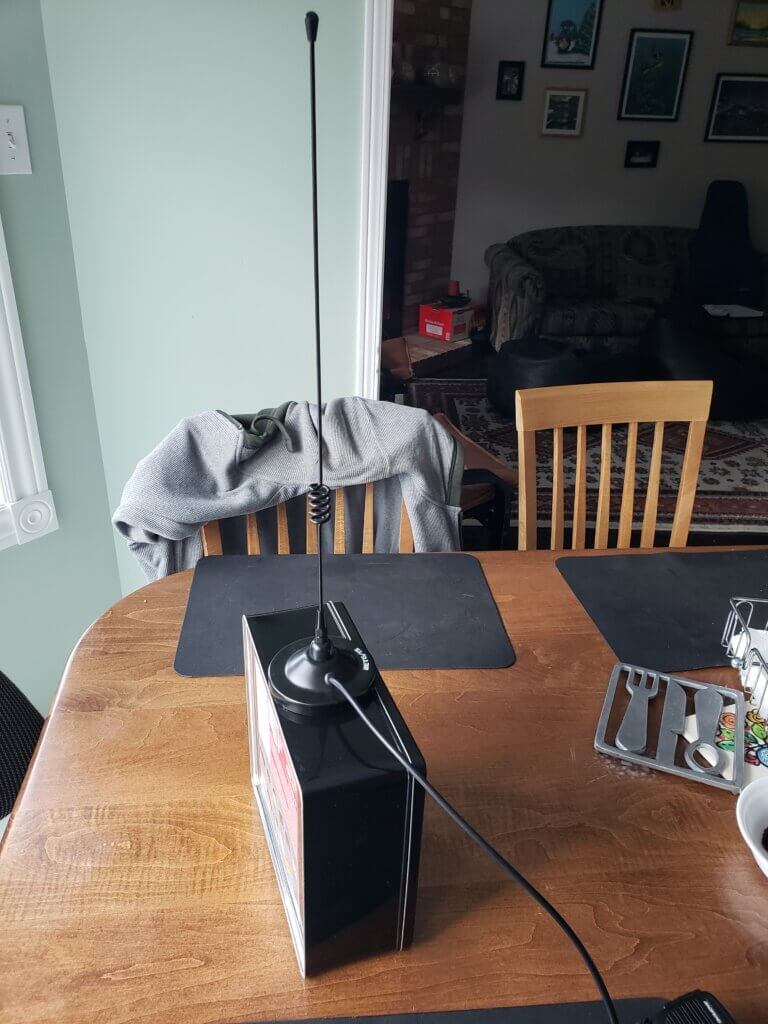
We tried the cookie tin lying flat and up on its side. On it’s side, the height is comparable to our dutch oven – and the results were comparable as well. When sitting flat, the results were not as good.
So:
- Weight is not that important
- Height is critical
- Magnetic attraction is critical
And combos?
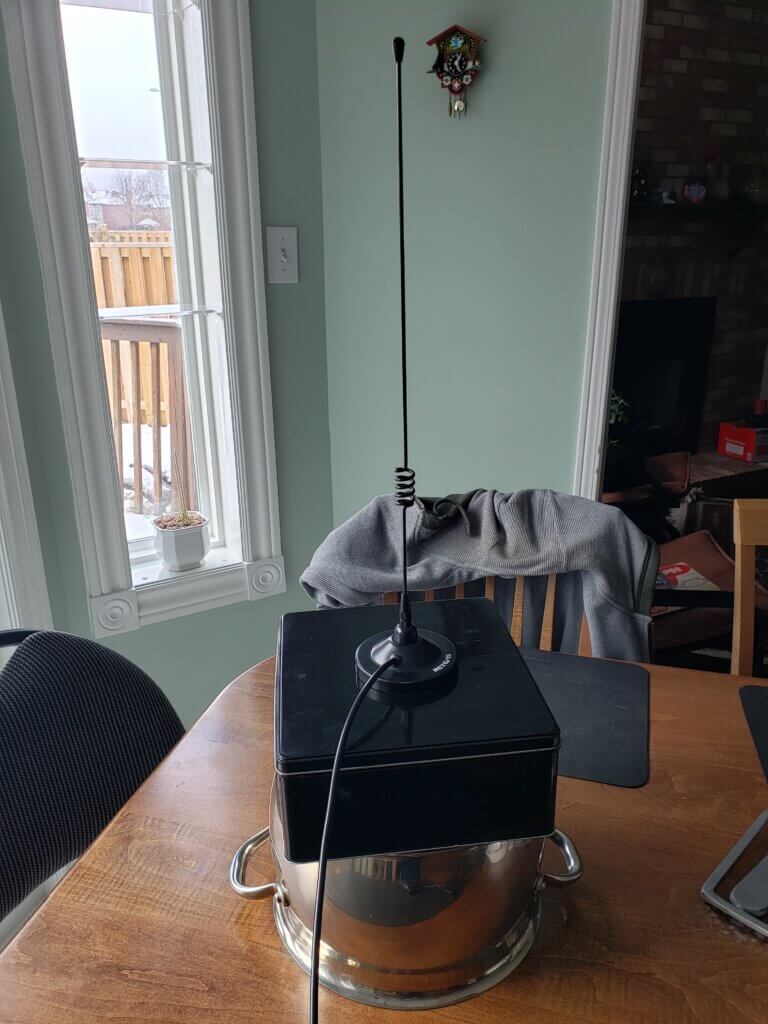
Cookie tin on top of the dutch oven gave us better results than either one alone. The relative results:
- Vertical tin: 1.20@144MHz and 1.30@1.46 MHz
- Dutch oven: 1.20@144 MHz and 1.24@146MHz
- Both: 1.10@144MHz and oops-didn’t-write-it-down
So height seems to win the day,
More tests could be done. But we had to release the pots for supper preparation.
For completeness: we tried the dutch oven on top of the aluminum turkey pot to see if magnetic adhesion to the dutch oven and dutch oven contact to the aluminum would work. It didn’t.
Final conclusions
The ultimate reading is how well others read your signal. But before you start bothering other people, a nanovna is a great way to figure out how well thing are working, and, in particular, how they work in your particular setup. Simply moving from one place to another can affect things.
A cookie sheet is not the best solution – so if you don’t have on or only have an aluminum one, don’t go out and buy another one just for your radio.
Our fried VE3IPS says to stick the magmount on a file cabinet… but ours is in the basement. The test would be pointless. Your results may vary.
Big tall pot that sticks to magnet is the best starting option. Then work on combos.
The cookie tray goes back to the cupboard for now.
The cast iron frying pan and the other pot go back to what they do best.
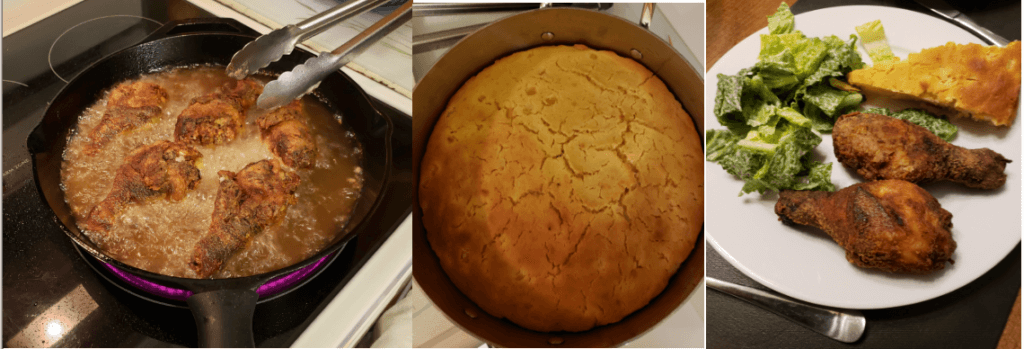
Yes, we did make this stuff. The maker movement isn’t just about technical stuff. Man does not live by tech alone.
- A.I. North and Python (2)
- Announcements (60)
- Events (88)
- Post-Event Report (25)
- Radio (9)
- Robotycs (5)
- Uncategorized (11)
- Upcoming Event (9)
- Update (32)
Latest Articles

YLab
123 Hillsview Dr, Richmond Hill, ON L4C 1T3
